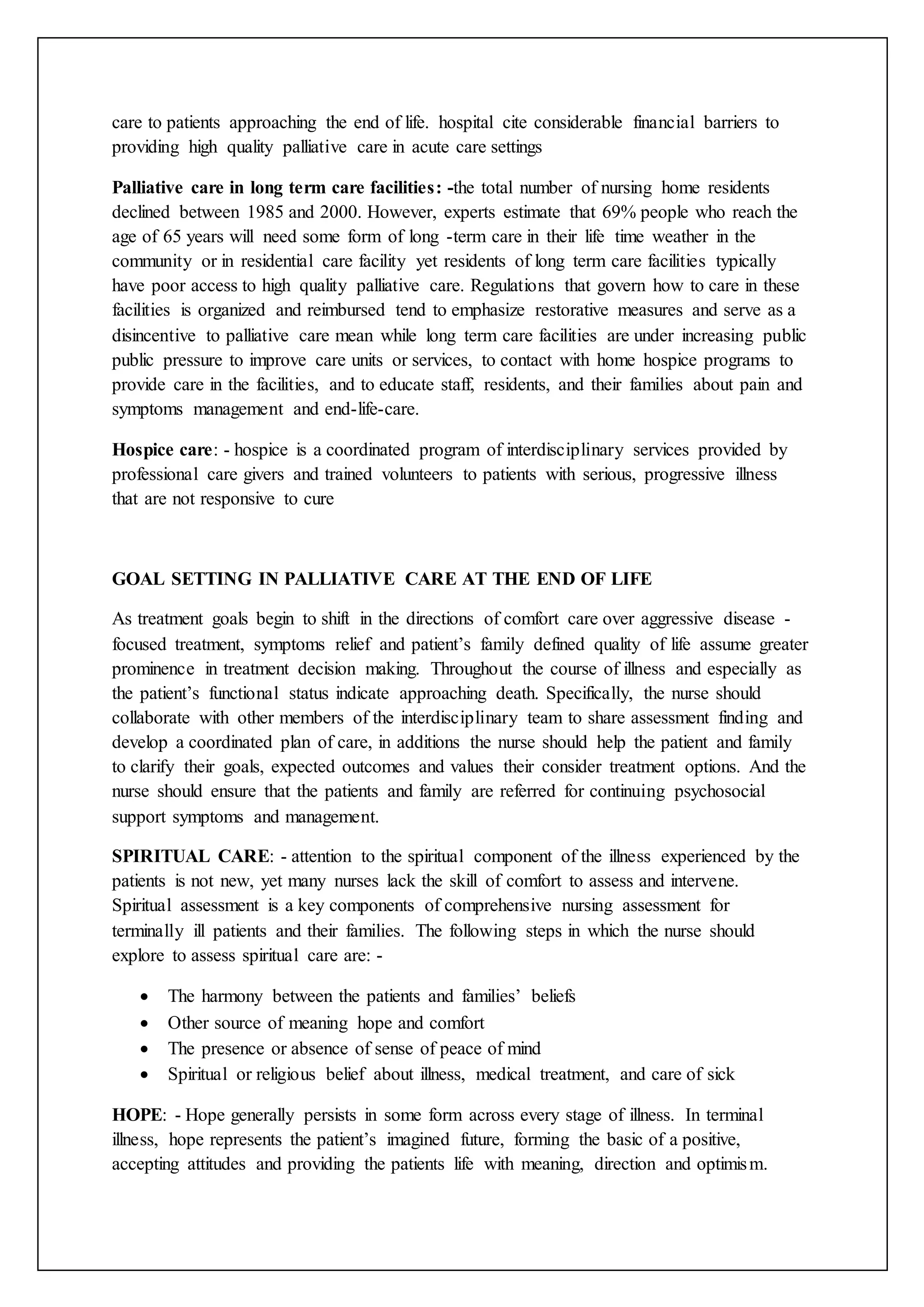End of life care refers to healthcare provided to patients with terminal illnesses that have become advanced, progressive and incurable. It involves palliative care, patient autonomy over treatment decisions, and consideration of medical interventions and resource allocation. End of life care aims to improve quality of life for patients and their families through comprehensive treatment of physical, psychological and spiritual needs. It can take place in various settings like hospitals, palliative care facilities and long-term care homes. Effective communication and cultural sensitivity are important to provide quality end of life care.








